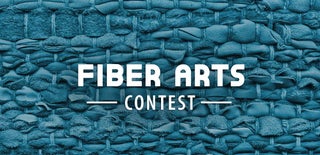Introduction: Lady With Umbrella
Embroidery has existed in some form across the globe. Whether it’s displayed on clothing, home goods, or as an artwork. it’s a timeless craft. I love Embroidery work on clothes, Bags, Shoes, etc. I am Indian, I wear ethnic, which has lots of threadwork options. Whenever I see threadwork on any store I am like buying all the stuff altogether :D
It is easy, relaxing, and one of the least expensive hobbies you can take up. You can create beautiful shapes, characters, flowers, figures or any design of your own just by using thread and needle. You can achieve personalized effects when you embroider by hand but sometimes you want your design to look more real, stand out and not look flat. So, I made this 3D embroidery. Its really Eye-Popping design and it came out to be very beautiful. There are many stitching techniques in Embroidery but I used Back Stitch and Satin Stitch in this design. Let's see how I did this.
Step 1: How to Do Back Stitch
We have various types of stitch for outlining any design, but backstitch works and is very easy. Essentially, it’s like driving a car backward. You move forward the line under the surface of your hoop. But on the surface of the fabric, your needle is moving backward.
* Bring the needle up at point A, beneath the fabric.
* Pull the thread up and take it down at your desired length at point B. This a straight stitch.
* After taking the needle down at point B, bring the needle up again at desired length at point C from below.
* Take it down at point B again. You will work in reverse for this stitch.
* Work in the same way for the rest of the design. Bringing the needle up at the desired length from below and taking down the thread at the previous stitch.
Step 2: How to Do Satin Stitch
Satin Stitch is a basic embroidery stitch that can be used to fill any design. It is a series of straight stitch that is closely stitched together.
* Start with inserting the needle at point A and bring the thread up.
* Insert the needle at the desired distance at point B.
* Again, insert the needle just next to point A i.e on point C.
* Bring up the thread at point C and take it down at point D. The stitch should be closely stitched together without a gap.
* Continue to work in similar fashion till the end of design.
Step 3: Tools and Materials Required
1) Wooden embroidery hoop. It is a clamping device used to hold the fabric in place.
2) Embroidery Floss as required for your project.
3) Embroidery fabric of your choice. Choose light-colored cotton if you are a beginner. Natural cream and white are traditional backgrounds.
4) Pencil to trace your design. A regular pencil will work.
5) Small Scissor.
Step 4: Assemble Your Hoop
Lay the inner ring of the embroidery hoop on the table, Place your fabric over it. And then place the outer ring over the fabric. Fit them together and then tighten the screw holding the frames together. The fabric should feel tight. The purpose of the hoop is to supply tension on the fabric. Tap on your fabric. It should sound like a drum.
Step 5: Draw Your Design
Draw or trace your design on the fabric. For beginners working with simple fabrics, tracing would be easy. You can also draw freehand designs of your own. I am using a pencil to draw my sketch onto the fabric.
Step 6: Start Outlining Using Back Stitch
Thread the floss into the embroidery needle, just like how you would thread a normal sewing needle. Cut the floss as per required length and knot it at the end. As in drawing, we outline our design first before filling in the color. The same is with the embroidery. Complete the outlining first.
I used Back Stitch for the complete outlining. For the Umbrella I used 3 strands of floss as later I have to fill it with another color. For the body and skirt, I used 6 strands floss.
Step 7: Time for 3D Hairs
For the hair embroidery, thread is not stitched on the flat fabric. Infact threads are tangling from the fabric and you can do everything with them. Braiding, Ponytails, add waves or curls. For the hairs, I am using dark brown floss.
Start by inserting the needle from the back of the fabric at the edge of the umbrella. Remember hairs should be at the middle of the body. Fold the floss by measuring the desired hair length and sew it back from where you started. To make the stitch sturdy, make a knot after each stitch. This method produces very realistic looking hair. It is important to set each thread very close to each other. Repeat the steps and stitch untill the desired hair density is achieved.
After the hair stitch cut the folded floss to make two separate strands of thread. Then using a scissor cut the hairs into equal length. Braid the hairs for beautiful hairstyle and tie the end using another floss :)
Step 8: Fill the Umbrella With Color
After finishing the hairs, its time to color the Umbrella using Satin Stitch. I used Magenta Floss to fill in the Umbrella sections. Start stitching one section from the centre of the Umbrella and repeat it with every section.
Step 9: The Lady Is Ready to Move
So here is the final design. You can frame this design, make a cushion cover out of it or anything you like. I was confused about what I am going to make out of this design but probably I will make a cushion cover for my bed :)
Hope you enjoyed this Instructable. Thank you !!

Participated in the
Fiber Arts Contest











